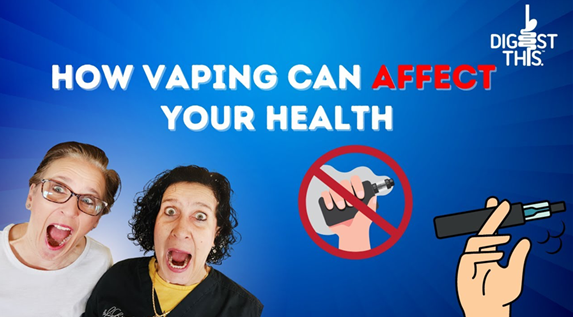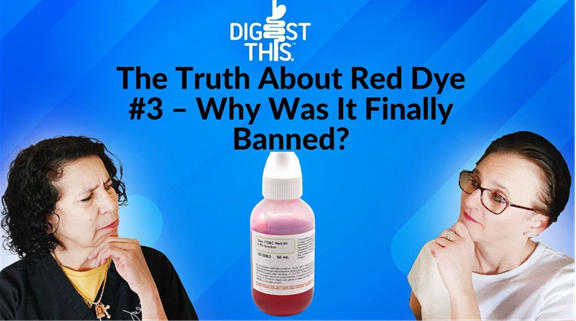Vaping has exploded across America since 2006, with many believing it's a healthier alternative to smoking. The reality? There's nothing healthy about inhaling toxic chemicals, heavy metals, and cancer-causing substances into your lungs. With a 34% increase in vaping usage between 2020 and 2024, and over 6,300 vaping products flooding the market, it's time to understand what vaping really does to your body—especially for our youth whose brains are still developing.
What Is Vaping?

E-cigarettes go by many names: vapes, vape pens, e-hookahs, mods, vaporizers, and e-pipes. These battery-operated devices heat liquid to produce an aerosol or vapor that users inhale and exhale. They deliver nicotine or cannabis directly to your lungs through this aerosolized vapor.
These devices come disguised as everyday objects. They look like USB drives, pens, smartphones, highlighters, and even toys. Some smartphone-style vapes include screens where kids can play games, complete with reward systems for vaping. This isn't coincidence—it's strategic marketing aimed at young people.
The vaping industry generated $488.9 million in sales last year alone, proving this isn't just a trend—it's a massive, profitable business targeting our most vulnerable population.
The Youth Vaping Crisis
The statistics are alarming. Currently, 3.5% of middle schoolers (12 and 13-year-olds) are vaping, while 7.8% of high schoolers have picked up this dangerous habit. Many parents report these numbers seem low based on what their children observe at school, where "everyone has a vape" and vaping equals social acceptance.
Over 86% of young vapers use flavored products—watermelon, mango, and other appealing flavors designed to hook young users. These aren't accident flavors; they're calculated marketing strategies. Additionally, 55% use disposable vapes for convenience, and 30% are using these devices for marijuana consumption.
Perhaps most concerning: 60% of young vapers want to quit but haven't been able to. This speaks to the addictive nature of these products and the struggle many face once they start.
What's Really Inside Your Vape
Nicotine and Brain Development
Nicotine poses significant dangers to youth because their brains continue developing until age 25. Young people can show signs of nicotine addiction very quickly—sometimes before they even begin regular daily use. During adolescence, nicotine harms brain parts controlling attention, learning, mood, and impulse control.
Even vapes marketed as "nicotine-free" have been found to contain nicotine, making every puff a potential step toward addiction.
Toxic Chemical Cocktail

Beyond nicotine, vapes contain a dangerous mixture of substances:
● Cancer-causing chemicals that accumulate in your system over time
● Heavy metals including nickel, tin, and lead from the heating battery
● Chemical particles that deposit directly in your airways and lungs
● Flavoring chemicals that may taste appealing but damage respiratory tissue
One patient case illustrates this danger perfectly: a woman suffering mysterious health issues visited multiple doctors before discovering elevated heavy metal levels in her system—all from vaping. The heated battery releases these metals directly into the vapor you inhale.
Additional Safety Concerns
Vaping devices pose physical dangers beyond chemical exposure. Battery explosions have caused significant injuries to users, adding another layer of risk to an already dangerous practice.
The Marketing Deception
Vaping was originally marketed as a smoking cessation tool—a way for cigarette smokers to gradually reduce nicotine intake. However, only 29% of current vapers use these devices for that purpose. The majority are new to nicotine products entirely, meaning vaping is creating addiction rather than solving it.
The FDA didn't regulate these products until 2016, allowing nearly a decade of uncontrolled marketing and product development. During this time, companies perfected their youth-targeting strategies, creating colorful, game-like devices that appeal to children and teenagers.
Why This Matters for Parents
Your child could be vaping without your knowledge, regardless of your family's socioeconomic status or the type of school they attend. These devices are designed to be unrecognizable—they look like school supplies, technology, or toys you'd expect to see in your child's room.
Young vapers are significantly more likely to become cigarette smokers in the future, meaning today's vaping epidemic could fuel tomorrow's smoking crisis. The chemicals they're inhaling affect developing brains in ways that impact attention, learning, mood regulation, and impulse control—issues many young people already struggle with.
Taking Action Against the Vaping Epidemic
Education remains our most powerful tool. Parents need to research what vaping devices look like, have honest conversations with their children, and remain vigilant about this hidden danger. Young people arriving in emergency rooms with "popcorn lung" often express genuine surprise that vaping could harm them—they simply didn't know.
The vaping industry has successfully marketed dangerous products as safe alternatives, but the science tells a different story. Every puff delivers toxic chemicals, heavy metals, and addictive substances directly to developing lungs and brains.
Protect Your Family's Health
Vaping isn't the safe alternative it was marketed to be. It's a dangerous gateway to nicotine addiction, packed with cancer-causing chemicals and heavy metals that damage your body from the inside out. For young people, it threatens brain development and sets the stage for lifelong addiction struggles.
The $488.9 million vaping industry profits from addiction and illness-don't let your family become their next customer. Stay informed, stay vigilant, and remember that when it comes to inhaling toxic chemicals, there are no safe alternatives.
👉 Book a consultation with our team to get personalized support
👉 Or check out the other amazing Dr. Liz Cruz products designed to help your family stay healthy and addiction-free




